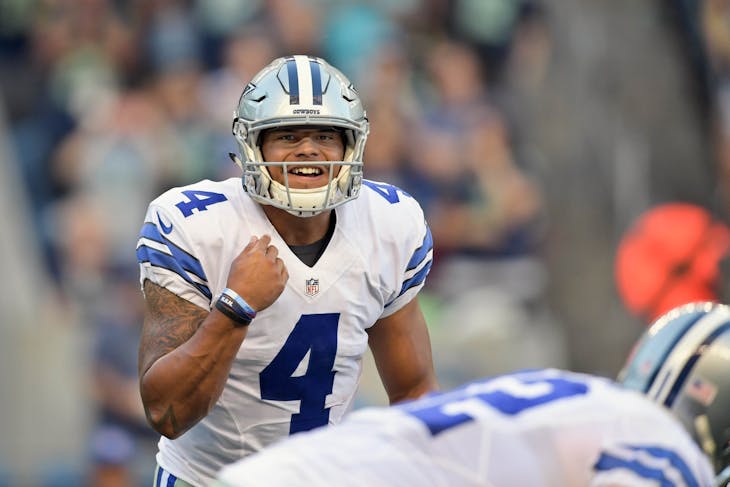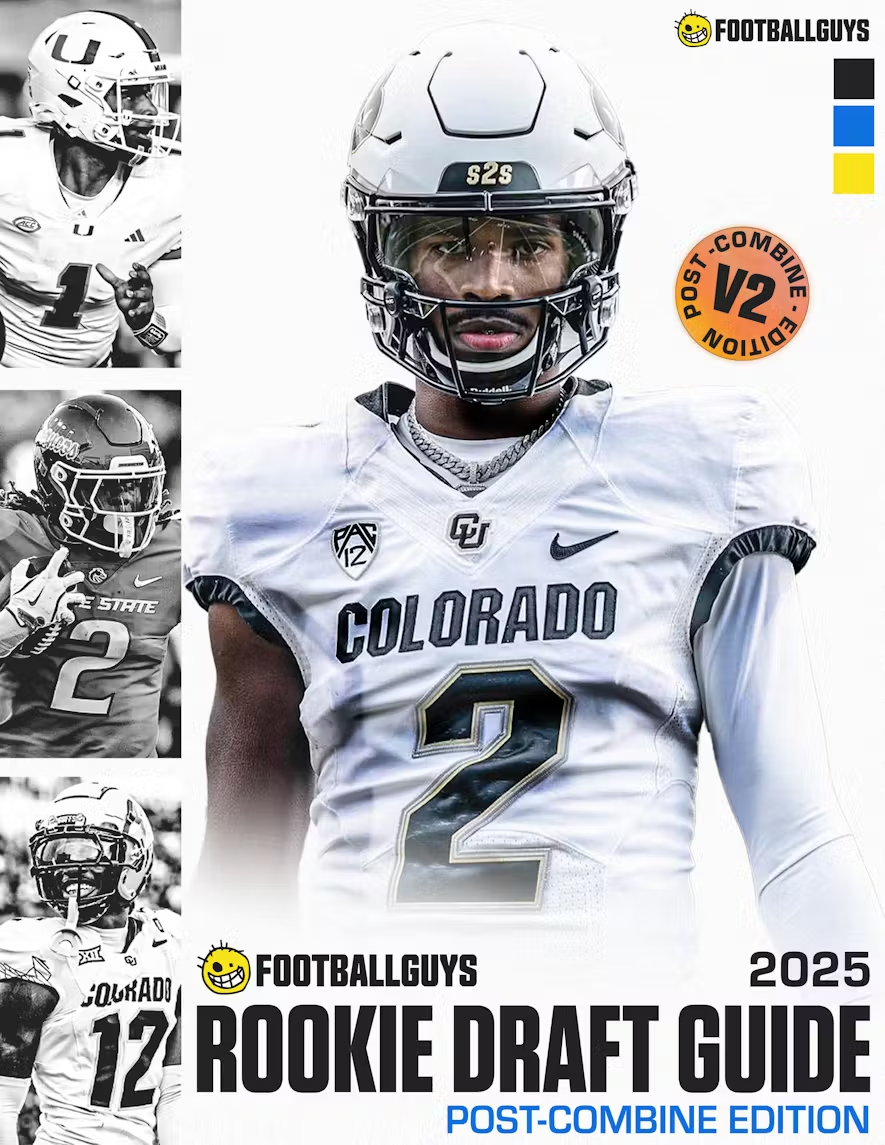
There's a lot of really strong dynasty analysis out there, especially when compared to five or ten years ago. But most of it is so dang practical-- Player X is undervalued, Player Y's workload is troubling, the market at this position is irrational, and take this specific action to win your league. Dynasty, in Theory is meant as a corrective, offering insights and takeaways into the strategic and structural nature of the game that might not lead to an immediate benefit but which should help us become better players over time.
When Should You Rebuild?
I wrote last week that in general, it was probably more important to know when to rebuild your dynasty roster than how to rebuild your dynasty roster. (Rebuilding is defined for our purposes as "ceasing to care about current-year results".) Pull the trigger too early on a rebuild, and you're sacrificing more in terms of "expected lifetime championships" than you're gaining back. Wait too long and you won't have enough valuable assets left to turn things around.
The key test, I argued, is not "How valuable is my current roster?", it's "How much value is my roster expected to lose, what are the odds I win a championship this year, and is the latter high enough to justify the former?" All rosters lose value over time. Even the best fantasy players eventually go to zero (you don't see many teams trading for Jerry Rice these days, after all). That value loss should be treated as a cost with your chances of winning a title treated as the potential reward.
"Bad" teams should still compete if the cost of doing so is sufficiently low. "Good" teams should still rebuild if the cost of not doing so is sufficiently high. (In fact, the best time to rebuild is when your team is still decent so that you'll have enough assets to trade for what you need.)
How Should You Rebuild?
Okay, so knowing when to rebuild is crucial, but once you're committed to a rebuild, knowing how to pull it off is also pretty important. Fortunately (if unsurprisingly, given my love of simple rules), I have a three-word heuristic to guide you through the process: Don't Lose Value.
If it's starting to look like I'm obsessed with roster value, there's a good reason for that: I am. I recently argued that roster value should be the number one thing dynasty managers pay attention to. The most valuable teams are the most likely to win games this year. They're the most likely to still be competitive next year. They are the best-equipped to handle injuries, either because they have a replacement already on their roster or because they have enough desirable trade assets to acquire one when needed.
(What exactly is "value"? There are any number of estimates: dynasty startup ADP, dynasty rankings, dynasty player values from Dan Hindery, or free options from sites like KeepTradeCut or FantasyCalc. Some of these-- especially the rankings and Dan Hindery's trade values-- are prescriptive, meaning they say how a player should be valued. Others-- dynasty ADP, KeepTradeCut's crowdsourced rankings, and FantasyCalc's trade value calculations-- are descriptive, meaning they estimate how a player actually is valued. This distinction can matter in certain instances, but for the most part, any high-quality source you choose will work fine for our purposes. Throughout this column, I'll use several of these estimates.)
I mentioned last week that the average roster might lose 10-15% of its value every year. This value is then replenished, on average, with incoming rookies so that the total pool of available value remains the same. Because value is always relative, if you simply stop getting worse, you're automatically getting better.
We'll get into the "how" of "simply don't lose any value" in a bit, but first, let's look at why you can get better simply by not getting any worse. Imagine a league where there are 12,000 points of "value" to be had. If this value was evenly distributed, every team would have 1,000 points. But over time, teams separate; some get better, others worse. If your team is only worth 850 points of value, you have a below-average squad, and it will be very difficult to win.
But if teams lose an average of 15% of their value per year and you go a single year without losing any value at all, suddenly your team is up to league average; everyone else's roster decreases in value to 850 "points" to match yours, and then teams add 150 "points" worth of rookies to get back up to 1,000. If you go two years in a row without losing any value, your team will be substantially better than average, probably even a title contender.
This is counterintuitive to many; people commonly believe that the key to rebuilding is gaining value, not realizing that it's sufficient to simply stop losing value. When everyone else is running backward, you can move to the head of the pack just by stopping and standing still.
How Do You Stop Losing Value?
First, a warning: in case it's not clear yet, all of this discussion is going to be fairly abstract. What does it mean for a team to be worth "1,000 points of value"? Nothing, really; this is just a conceptual shortcut, a framework to make it easier to think things through.
Also, whenever I discuss teams or player types, I'm talking in the aggregate. Some teams in dynasty leagues will lose value, but some will gain value; nevertheless, the average across all teams will be a net loss in value. When I say "all players lose value", that's true in the long run. Over a single season, it's not surprising to see players gain or lose maybe 20% of their value if they have a better or worse year than expected. But if you average together all players, the result is a consistent annual loss in value.
Similarly, if I say "rookie picks hold their value", I don't mean each rookie pick will hold its value. If you acquire a future first-round pick from what is presumably the worst team in the league, and then that team makes a surprise run to the playoffs, the specific pick you acquired has lost value. (Similarly, if you acquire a pick from a presumed playoff team and that team falls apart, your specific pick has gained value).
But across an entire 12-team league, there will be 12 first-round picks. One of them will be the first overall pick, one will be the second overall, and so on. The pool of assets titled "future first-round picks" is stable in value even if certain assets within that pool might fluctuate. As a result, it is a good pool to invest in if your goal is to retain value.
And that's the general idea in a nutshell: when you opt to rebuild, reinvest as much of your roster as possible into asset classes that tend to lose less value and pivot away from asset classes that tend to lose more value. Some think this is as simple as "young players = good, old players = bad", but there's a lot more nuance to it than that. Let's run through a list of asset classes to invest in and those to divest of.
Buy: Future Rookie Picks
This is probably the most obvious one, but it's obvious for a reason. Rookie picks never get hurt, they never get suspended, they never tear their ACL. They don't even take up a roster spot, so there's no limit to how many you can carry. If you can trade 500 "value points" worth of players for 500 "value points" worth of rookie picks, you've pretty much nailed your rebuild.
Some might object that rookies aren't going to do much to help you compete, but it's important to remember that buying rookie picks doesn't mean you're going to end up with rookies. If you like the rookies, you can use the picks to draft them. If you don't like the rookies, or if someone makes an offer that's too good to pass up, you can always trade those picks for veterans. Whatever your roster needs, rookie picks can usually become that.
Buy: Rookie Receivers
Continue reading this content with a ELITE subscription.
An ELITE subscription is required to access content for Dynasty leagues. If this league is not a Dynasty league, you can edit your leagues here.

